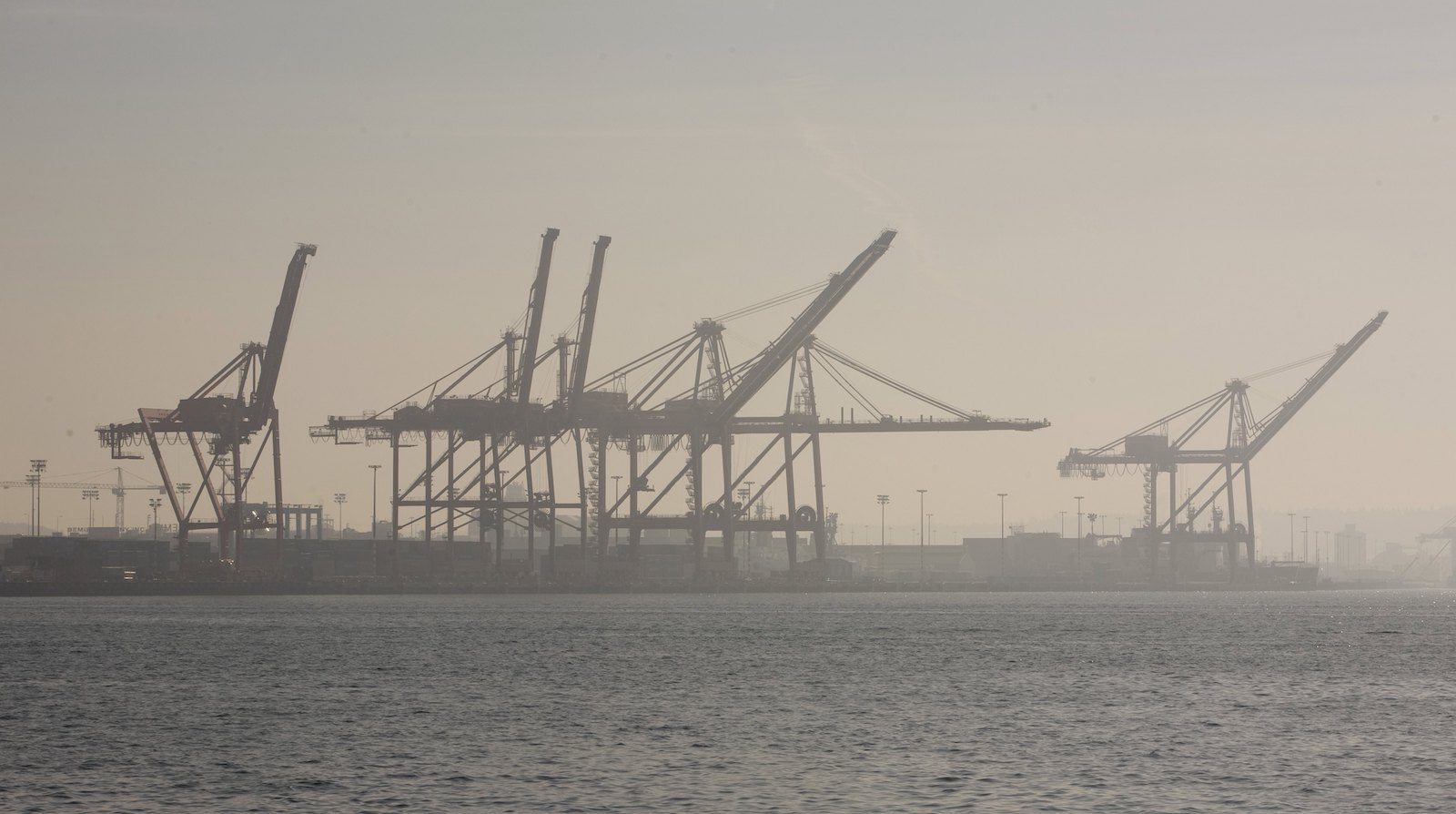This story was originally published by High Country News and is reproduced here as part of the Climate Desk collaboration.
Before the pandemic, the Rainier Beach Community Center served as a cornerstone of South Seattle civic life, hosting children’s operas, legal clinics, and pancake breakfasts. In 2019, after distant wildfires blanketed the city in hazy, unhealthy air for weeks in both August 2017 and August 2018, the Seattle city government designated it and four other public buildings as community refuges from smoke. The shelters were meant to offer a respite for thousands of Seattleites experiencing homelessness or lacking ventilation systems at home.
Luckily, last summer was mild in Seattle, and the smoke shelters were never used. This summer, however, as August approaches, Washington has already seen above-average wildfire activity. Meanwhile, Seattle has shuttered the community center to curb the spread of COVID-19, and, with cases in the area rising, it may remain closed for some time. Public health officials have been working around-the-clock for months, tracking COVID-19 cases, adapting to new policies, and crafting pandemic messaging for the public, among other things; many air quality experts have been pulled away from their usual responsibilities to manage the emergency. Now, they’re facing another public health threat on top of the virus: smoke exposure.
Wildfire smoke contains air pollutants that have been linked to 17,000 deaths a year in the United States, as well as cardiovascular illness, respiratory issues like asthma, and premature births and lower birth weights. In 2017, after a particularly smoky season in Montana, respiratory-related ER visits doubled; scientists’ measurements revealed that some parts of the state experienced levels of air pollution equivalent to smoking nearly 30 cigarettes a day. Experts predict an uptick in the number and intensity of wildfires in the United States in coming decades, as well as a rise in smoke-related deaths, which could reach as many as 44,000 per year by 2100. The Western United States, with its rapidly changing climate and population growth, will be disproportionately affected.
This year, due to the risk of COVID-19, Seattle has yet to determine specific air quality criteria that would trigger the opening of smoke shelters, said Shirlee Tan, a toxicologist at the public health office for Seattle and King County. “It’s hard to forecast when we’ll have smoke, if we do this year, and it’s hard to know what [reopening] phase we’ll be in,” she said. Complicating this is the overlap between high-risk groups for both COVID-19 and smoke inhalation: people with underlying medical conditions, particularly respiratory issues, and people older than 65. Furthermore, research suggests that health risks from COVID-19 and smoke inhalation may build on one another. One study, for example, found that smokier days were linked to higher rates of the flu, suggesting that wildfire smoke could make people more vulnerable to respiratory viruses; conversely, long-term lung damage from COVID-19 could make people more susceptible to smoke.
If the shelters do open, precautions will be necessary to mitigate the spread of COVID-19, such as capacity limits, regular disinfection, and the distribution of masks and gloves. The Centers for Disease Control and Prevention’s guidelines also recommend temperature screenings, but Tan doubts those will happen: “Public Health is already swamped with COVID activities, so I’m not sure they’d have the staff to do that.”
In accordance with a state mandate, people would be asked to wear a face covering. But that becomes more complicated where the risks of smoke and COVID-19 intersect. While cloth masks decrease the transmission of the COVID-19 virus, they do not offer protection from wildfire smoke. (Only fitted N-95 masks — crucial equipment for health care workers and currently in short supply — can do that.) People with respiratory issues generally have a hard time breathing when it’s smoky, and cloth masks might make it even harder, potentially making smoke shelters inaccessible to those who need them most.
So public health officials across the Northwest are recommending that people stay inside and prepare their living spaces for smoke exposure. “In the past, the message has been to seek out a public space — a shopping mall, library or community center — and this year that’s not an option,” said Lisa Woodard, a public information officer at Spokane Clean Air.
That means people with HVAC systems need to ensure that they have clean filters. As for the many Western residents — including the more than 60 percent of Seattleites — who lack air conditioning, they should build “clean rooms” inside their homes using commercially available air purifiers or much cheaper DIY versions, which require only a box fan and a filter. Sarah Coefield, an air quality specialist at the Missoula City-County Health Department, suggests purchasing supplies as soon as possible. “We don’t need a toilet paper moment with air filters,” she said.
Given the turmoil of the pandemic, public health officials hope their guidance on preparing for smoke season is getting through. Several mentioned “message fatigue” as the biggest barrier to connecting with community members. “There’s been so much messaging on COVID that some people aren’t even opening [our] emails any more,” Tan said. “It’s hard.” Beyond message fatigue, many public health officials are just plain exhausted: “My brain feels like it’s splitting into multiple pieces, holding all these things together,” Coefield said. “Because the health department is so geared toward the COVID response, we’re kind of playing catch-up.”
Now, public health departments and the public are left to wait and see: Maybe the Pacific Northwest will dodge smoke season altogether this year, or, if fires do blow smoke into cities, perhaps the timing will coincide with reduced COVID-19 risk. Meanwhile, it’s hard to plan exact precautions without knowing what the COVID-19 numbers look like. “A lot of these decisions will need to be made pretty quickly depending on what’s happening,” Tan said. In the meantime, public health departments grind on in their fight against the virus.




